Vegetables
Delicious lettuce and broccoli Bonnie starter plants are in season this fall.
Filters
Category
Less
Planting Time
Less
Sunlight Conditions
Less
Annual/Perennial
Less
Heirloom
Less
Plant Type
Less
Plant Height
Less
Tomato Type
Less
Pepper Heat
Less
Garden Environment
Less
Best Seller
Beefsteak Red Tomato (2 Pack)
Beefsteaks are always grown for their flavor and size for slicing and summer sandwiches. This variety produces large, meaty red fruit over a long season on indeterminate plants. Because it matures late compared to many other tomatoes, it will provide a fresh harvest in the latter part of the season. This is an old favorite beloved by gardeners in the Northeast and grown throughout the country. Vigorous vines grow best in tall cages. Resistant to fusarium wilt (F) and nematodes (N).
- Regular price
- $17.99
- Regular price
-
- Sale price
- $17.99
- Unit price
- per
Serrano Pepper (2 Pack)
This variety is a vigorous bearer of hot, pungent, candle-shaped fruits that mature from green to bright red. Plants do well in most climates and are especially well adapted to hot, humid areas. This pepper is growing in popularity for pickling and salsa, and is the pepper of choice for making pico de gallo.Organic varieties are only available at retailers.
- Regular price
- $17.99
- Regular price
-
- Sale price
- $17.99
- Unit price
- per
Green Magic Broccoli (2 Pack)
Enjoy beautiful, smooth, medium-sized heads of blue-green broccoli. Plants are compact and grow quite well in containers. Don’t pull them once you’ve harvested the head, though, as plants will continue to produce lots of side shoots that are just right for snacking or sautéing. This variety has excellent heat tolerance, too. Plant in late summer for a fall harvest.
- Regular price
- $17.99
- Regular price
-
- Sale price
- $17.99
- Unit price
- per
Lieutenant Broccoli (2 Pack)
Well adapted to warm weather, these plants form smooth, dark green heads on medium-sized stems with few side shoots. Heads offer classic flavor and all the vitamins and protein broccoli is known for. Water plants consistently for best yields, especially as temperatures climb. If you like Packman, you’ll like Lieutenant Broccoli.
- Regular price
- $17.99
- Regular price
-
- Sale price
- $17.99
- Unit price
- per
Red Romaine Lettuce (2 Pack)
This eye-catching romaine deserves a spot in both the vegetable and the flower garden. Colorful leaves start out green, then fade to a deep red-bronze as they mature. Red Romaine leaves bring a sweet, flavorful crunch to salads and sandwiches. The heads (if allowed to form) are thick enough to grill. Plants are slow to bolt and grow best in full sun, but will tolerate partial shade and even appreciate it in spring in hot climates. Resistant to mosaic virus.
- Regular price
- $17.99
- Regular price
-
- Sale price
- $17.99
- Unit price
- per
Banana Sweet Pepper (2 Pack)
Named for its banana-like shape, this variety bears sweet, mild banana peppers that mature from yellow, to orange, and then to crimson red. Plants fruit prolifically, easily producing up to 25 to 30 pods per plant. Banana peppers are great for frying and pickling, and are an excellent choice for making pepper rings for sandwiches. Great for containers. Organic varieties are only available at retailers.
- Regular price
- $17.99
- Regular price
-
- Sale price
- $17.99
- Unit price
- per
Better Boy Tomato (2 Pack)
High yields of smooth skinned, large fruit earn Better Boy a spot as one of the most popular tomatoes grown in the US and as one of our all time best sellers. The fruit has excellent classic tomato flavor with just the right balance of acid and sugar. This is a great slicing tomato. It is widely adapted throughout the country. Grow it in a tall cage or tie to a stake for support. The indeterminate vines are resistant to verticillium wilt (V), fusarium wilt (F), and nematodes (N). Organic varieties are only available at retailers.
- Regular price
- $17.99
- Regular price
-
- Sale price
- $17.99
- Unit price
- per
Big Boy Tomato (2 Pack)
The name, Big Boy, is easy to remember and so is the flavor. This is a big, sandwich-type slicer with smooth, bright red fruit and a flavor that everybody likes. It bears heavily in mid-season, yet the indeterminate vines continue fruiting (though not as heavily) until frost. Plants in our Alabama test garden, where conditions are excellent, have yielded 100 tomatoes each through a 10-week harvest season. Long vines need staking, or grow the plant in a tall cage. Resistant to cracking.
- Regular price
- $17.99
- Regular price
-
- Sale price
- $17.99
- Unit price
- per
German Queen Heirloom Tomato (2 Pack)
Heirloom. This old-fashioned beefsteak has large, sweet fruits that are lower in acid and quite meaty, making them perfect for slicing. The indeterminate vines will grow tall and bear fruit all summer long, so be sure to stake strongly or cage. One slice makes a great sandwich filling!
- Regular price
- $17.99
- Regular price
-
- Sale price
- $17.99
- Unit price
- per
Bush Goliath Tomato (2 Pack)
Goliath hybrid tomatoes have classic beefsteak shape and flavor with firm, light red fruit that have few seeds. In our Alabama test garden, where conditions are ideal and the harvest season is long, we harvest 70 or more fruit from each Goliath plant. The indeterminate vines are vigorous, so you will want to stake them or use a tall cage. Resistant to many diseases: verticillium wilt (V), fusarium races 1 ; 2 (FF), nematodes (N), and tobacco mosaic virus (T).
- Regular price
- $17.99
- Regular price
-
- Sale price
- $17.99
- Unit price
- per
Red Bell Pepper (2 Pack)
Sweet, juicy, nutritious red fruits add appetizing color to fresh salads and are superb for stuffing. Also great on the grill! The big, blocky peppers (they average around 4 to 6 Ounces) ripen from dark green to bright red. High-yielding plants are well adapted throughout the US. Grow your own and avoid premium prices at the grocery store. Organic varieties are only available at retailers.
- Regular price
- $17.99
- Regular price
-
- Sale price
- $17.99
- Unit price
- per
Sweet Green Bell Pepper (2 Pack)
Bonnie's best hybrid sweet bell pepper! A heavy yielder of large fruits. A good all-round pepper for slicing, stuffing, and freezing. This bell produces lots of fresh bell peppers gradually over the growing season. Plants in our Alabama garden produce from June through October, yielding 30 or more peppers from each plant. (Your results will vary based on care and the length of your growing season.) This is a good-sized plant, so be prepared to stake if needed. Organic varieties are only available at retailers.
- Regular price
- $17.99
- Regular price
-
- Sale price
- $17.99
- Unit price
- per
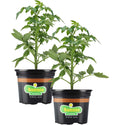
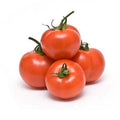


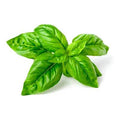 Herbs
Herbs
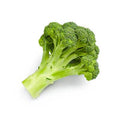 Vegetables
Vegetables
 Fruit
Fruit
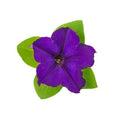 Flowers
Flowers
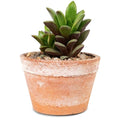 Succulents
Succulents

